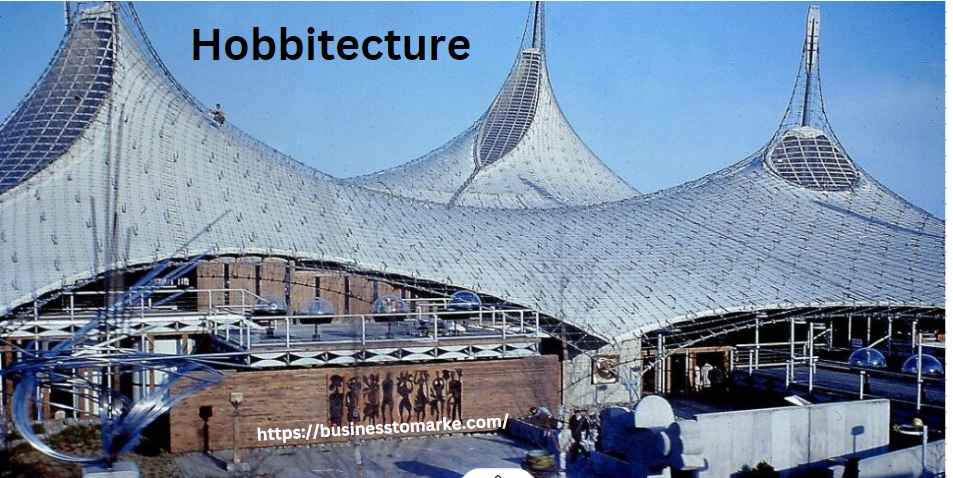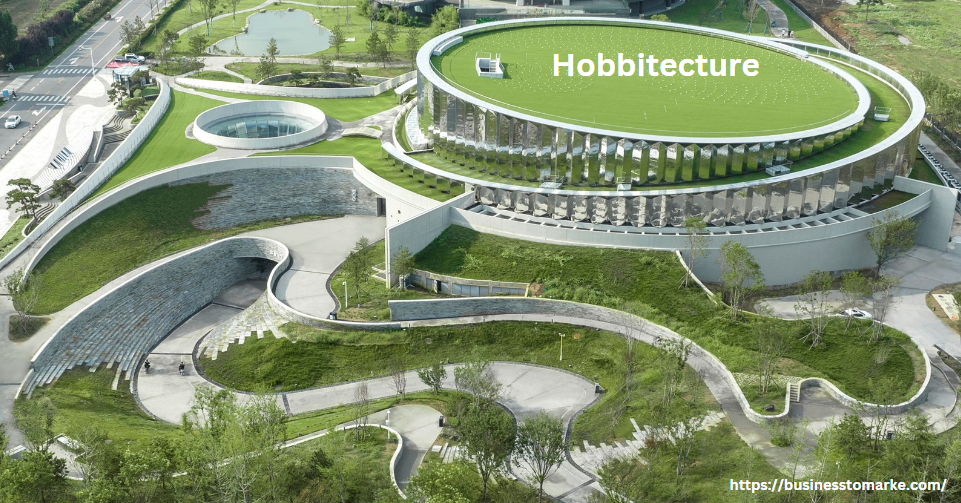Hobbitecture: The Enchanting Design Trend You Need to Know About

Introduction to Hobbitecture
Imagine living in a home that feels like it’s straight out of a fairy tale, nestled into the side of a hill, surrounded by lush greenery, and perfectly blended with the natural landscape. This enchanting design trend, known as hobbitecture, is gaining popularity for its whimsical charm and sustainable living practices. In this article, we will explore the world of hobbitecture, its origins, design principles, and how you can create your own hobbit-inspired haven.
History of Hobbitecture
Origins in Literature
The concept of hobbit-style homes originates from the imaginative world of J.R.R. Tolkien’s Middle-earth, particularly from “The Hobbit” and “The Lord of the Rings” series. Tolkien’s depiction of hobbit holes—small, cozy dwellings built into the earth—captivated readers and inspired architects and designers to bring these fictional homes to life.
Influence of J.R.R. Tolkien
Tolkien’s detailed descriptions of hobbit holes, with their round doors, grassy roofs, and snug interiors, have left a lasting impression on fans and designers alike. The charm and simplicity of hobbit holes offer a stark contrast to modern, industrialized living spaces, making them an appealing alternative for those seeking a more sustainable and peaceful lifestyle.
Defining Hobbitecture
Key Characteristics
Hobbitecture is characterized by its integration with the natural environment, use of natural materials, and emphasis on sustainability. Key features include:
- Earth-Sheltered Construction: Homes are built into hillsides or covered with earth to maintain a stable internal temperature.
- Round Doors and Windows: These elements add to the whimsical charm and are a signature of hobbit-style design.
- Natural Materials: Wood, stone, and clay are commonly used, creating a warm and inviting atmosphere.
Architectural Features
Architecturally, hobbit homes often feature:
- Grass or Living Roofs: These roofs are covered with vegetation, providing insulation and blending the home with its surroundings.
- Curved Lines and Organic Shapes: The design avoids sharp angles and straight lines, favoring curves that mimic natural forms.
- Small, Cozy Spaces: Interiors are designed to be intimate and functional, maximizing space efficiency.
Materials and Techniques
Natural Building Materials
Hobbit homes utilize materials that are locally sourced and environmentally friendly. Common materials include:
- Wood: For structural elements and interior finishes.
- Stone: For foundations, walls, and decorative elements.
- Clay and Cob: For walls and insulation, providing excellent thermal mass.
Sustainable Building Practices
Sustainability is at the heart of hobbitecture. Techniques include:
- Passive Solar Design: Maximizing natural light and heat to reduce energy consumption.
- Rainwater Harvesting: Collecting and utilizing rainwater for household use and irrigation.
- Composting Toilets: Reducing water usage and producing nutrient-rich compost for gardens.
Design Principles
Integration with Nature
A fundamental principle of hobbitecture is harmonizing with the natural landscape. Homes are designed to be unobtrusive, often blending seamlessly with their surroundings. This integration helps reduce environmental impact and enhances the aesthetic appeal.
Eco-Friendly Concepts
Eco-friendly features are integral to hobbit homes. These may include:
- Energy Efficiency: Utilizing renewable energy sources like solar panels.
- Waste Reduction: Implementing recycling and composting systems.
- Biodiversity: Encouraging the growth of native plants and creating habitats for local wildlife.
Famous Examples of Hobbitecture
Hobbiton in New Zealand
Perhaps the most famous example of hobbit architecture is Hobbiton in New Zealand. Originally built as a movie set for “The Lord of the Rings” films, it has since become a popular tourist attraction. Visitors can explore the meticulously crafted hobbit holes and experience the magic of Middle-earth firsthand.
The Shire of Montana
In the United States, The Shire of Montana offers a real-life hobbit living experience. This eco-friendly community features hobbit-style homes with sustainable practices, providing a unique and immersive lifestyle for its residents.
Benefits of Hobbitecture
Environmental Benefits
Hobbit homes offer numerous environmental advantages, including:
- Reduced Energy Consumption: Earth-sheltered design and passive solar heating lower energy needs.
- Minimal Impact: Natural materials and eco-friendly practices reduce the carbon footprint.
- Enhanced Biodiversity: Green roofs and native landscaping support local ecosystems.
Psychological and Aesthetic Benefits
Living in a hobbit home can also provide psychological benefits:
- Stress Reduction: The natural, cozy environment promotes relaxation and well-being.
- Aesthetic Appeal: The unique, storybook design creates a visually pleasing and inspiring space.

Building Your Own Hobbit House
Planning and Designing
Before embarking on the construction of your hobbit home, careful planning is essential. Consider the following steps:
- Research: Study existing hobbit homes and gather ideas for your design.
- Budget: Determine your budget and explore cost-effective options.
- Permits: Check local building codes and obtain necessary permits.
Finding the Right Location
Selecting the ideal location for your hobbit home is crucial. Look for:
- Natural Landscapes: Hillsides and wooded areas provide natural insulation and aesthetic appeal.
- Access to Resources: Ensure the availability of water, sunlight, and building materials.
Construction Process
Step-by-Step Guide
Building a hobbit house involves several stages:
- Site Preparation: Clear the land and excavate the building site.
- Foundation: Lay a strong, stable foundation using stone or concrete.
- Structural Framework: Construct the framework using wood and other natural materials.
- Earth Sheltering: Cover the structure with soil and plant grass or vegetation on the roof.
- Interior Finishing: Add interior walls, flooring, and unique hobbit-style features.
Common Challenges and Solutions
Challenges in building a hobbit home may include:
- Moisture Control: Ensure proper drainage and waterproofing to prevent leaks.
- Insulation: Use natural insulation materials to maintain a comfortable temperature.
- Permits and Regulations: Navigate local building codes and zoning laws.
Interior Design of Hobbit Homes
Cozy and Functional Spaces
The interior of a hobbit home should be both cozy and functional. Consider:
- Compact Layouts: Maximize space with clever storage solutions and multi-functional furniture.
- Warm Materials: Use wood, stone, and textiles to create a warm and inviting atmosphere.
Unique Interior Features
Incorporate unique features that reflect the hobbit aesthetic:
- Round Doors and Windows: Add character and charm.
- Built-In Furniture: Optimize space with custom-built furniture pieces.
- Decorative Details: Include elements like carved wood, stained glass, and earthy colors.
Hobbit Gardens and Landscaping
Creating a Hobbit Garden
A hobbit garden enhances the charm and sustainability of your home. Ideas include:
- Vegetable Gardens: Grow your own food in raised beds or traditional plots.
- Herb Spirals: Create a spiral garden for herbs and medicinal plants.
Landscaping Ideas
Landscaping around a hobbit home should blend seamlessly with the natural surroundings:
- Native Plants: Use plants native to your region to support local wildlife.
- Water Features: Incorporate ponds, streams, or fountains for added tranquility.
Living in a Hobbit House
Daily Life in a Hobbit Home
Life in a hobbit house is characterized by simplicity and a close connection to nature. Activities might include:
- Gardening: Tending to your garden and enjoying the fruits of your labor.
- Outdoor Living: Spending time outside, whether relaxing, dining, or entertaining.
Community and Lifestyle
Many hobbit home communities emphasize a sense of community and shared values:
- Cooperative Living: Sharing resources and responsibilities with neighbors.
- Sustainable Practices: Participating in community gardens, recycling programs, and renewable energy initiatives.
Cost and Budgeting
Estimating Costs
Building a hobbit home can vary widely in cost depending on materials, location, and design complexity. Key expenses include:
- Land Acquisition: The cost of purchasing suitable land.
- Materials: Natural materials can be more affordable but require careful sourcing.
- Labor: Hiring skilled labor for construction and specialized features.
Budget-Friendly Tips
To keep costs manageable, consider:
- DIY Projects: Undertake some construction tasks yourself.
- Recycled Materials: Use reclaimed wood, stone, and other materials.
- Phased Building: Build in stages, completing essential parts first and adding extras later.
Hobbitecture in Pop Culture
Influence on Movies and Media
Hobbit homes have captured the imagination of filmmakers and artists:
- “The Lord of the Rings” Films: Peter Jackson’s adaptation brought hobbit holes to life, inspiring real-world replicas.
- Video Games and Literature: Hobbit-style homes appear in various fantasy settings, continuing to enchant audiences.
Popularity in Modern Culture
The appeal of hobbit homes has grown beyond Tolkien fans to include:
- Eco-Conscious Individuals: Those seeking sustainable living options.
- Architecture Enthusiasts: People fascinated by unique and innovative designs.
Future of Hobbitecture
Trends and Innovations
Hobbitecture continues to evolve with new trends and innovations:
- Advanced Sustainability: Incorporating cutting-edge eco-friendly technologies.
- Modern Aesthetics: Blending traditional hobbit design with contemporary elements.
Potential for Growth
As interest in sustainable living grows, so does the potential for hobbitecture to expand:
- Community Developments: More hobbit-style communities may emerge.
- Mainstream Adoption: Elements of hobbit design may influence mainstream architecture.
Conclusion
Hobbitecture is more than just a design trend—it’s a lifestyle choice that emphasizes sustainability, connection with nature, and a whimsical, fairy-tale charm. Whether you’re a die-hard Tolkien fan or simply seeking an eco-friendly living solution, hobbit homes offer a unique and enchanting option. With careful planning, the right materials, and a touch of creativity, you can bring a piece of Middle-earth into your own backyard.




Leave a Comment